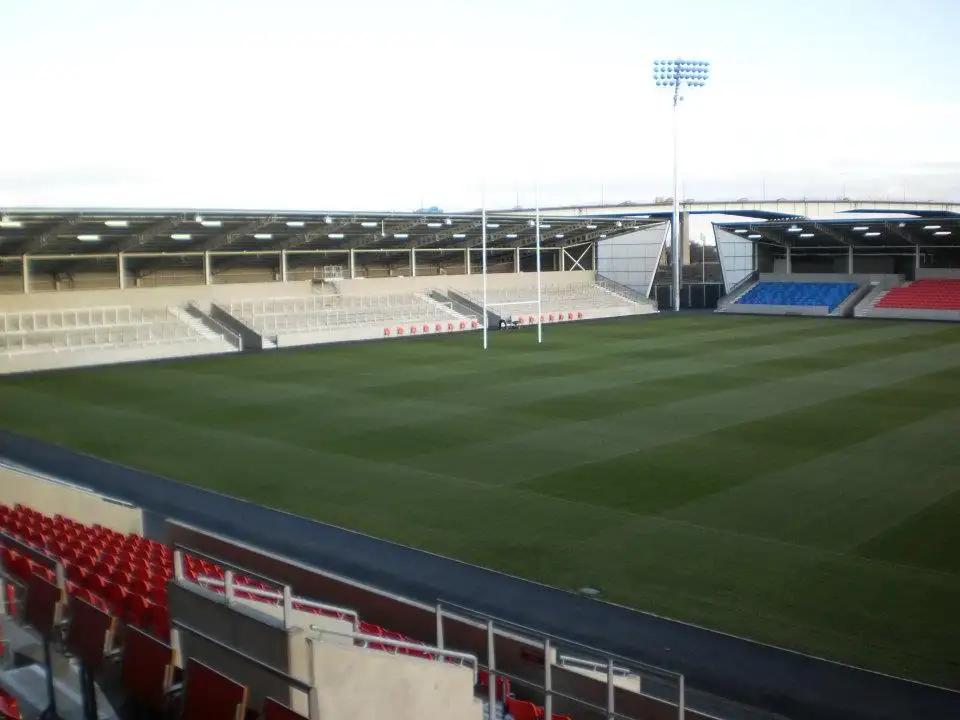There’s always room at the financial abyss

There was some annoyance last week about the BBC investigation into the finances of Super League. For many the timing of this investigation was particularly unfair, as was the singling out of rugby league’s financial problems. The implication of the report was that this was a problem unique to rugby league, while presumably other sports are in a relatively healthy financial state.
The report uncovered that 11 of the 14 Super League clubs have a combined debt of £68.5 million. In light of this sports finance expert Rob Wilson concluded that rugby league is on the edge of “a financial abyss”.
This is an alarming conclusion. Taken at face value Wilson believes that in the very near future professional rugby league could be a thing of the past. Yet why is rugby league on the brink of extinction, while other sports – for instance, soccer and rugby union – which are in the same financial hole aren’t spoken of in the same alarmist tone?
What is needed is a proper comparison with similar leagues in order to decide whether the problems facing Super League are really so much worse. In 2002 Delloitte and Touche published the Comparative Review of Sports Finances, comparing Super League with the rugby union Premiership, football’s Division One (now the Championship), the Scottish Premier League and County Cricket.
Being over ten years old and predating the current recession, this report can have only illustrative value at best. But for what it’s worth all these leagues had their problems, and Super League was by no means the worst.
Delloitte and Touche found that Division One football clubs were in debt as soon as wages were paid, paying on average 101% of their income on player wages. That figure was 91% for SPL clubs, 68% for rugby union Premiership clubs and just 48% for County Cricket clubs. Super League’s average was 77% – higher than rugby union but better than the soccer clubs. The reason for this was that the Premiership’s average income was £3.9 million per club, compared to £2.6 million for Super League. But the results indicated that rugby league’s finances were actually better managed than football clubs in both England and Scotland.
Is it the same story a decade later? Well, at the end of the 2010/11 season football’s Premier League clubs had a combined debt of more than £1.3 billion, more than twenty times the figure for Super League. That means that the average Premier League club had a debt of £67 million – in short, the Super League combined debt is less than several individual football clubs.
Someone on Twitter argued that comparisons with the level of debt in soccer shouldn’t be made, because the debt figures are only relevant when compared to revenue figures.
Yet the debts of Premier League clubs aren’t being reduced through revenue, because the league is consistently posting a loss. Again, in 2010/11 Premier League clubs made a total loss of £361 million, with Manchester City alone posting a loss of £197 million. The same situation is true of the lower leagues: research by Deloitte at the end of the 2011/12 season found that Championship clubs made combined operating losses of £130 million and pre-tax losses of £189 million.
What of rugby union? In 2010 eleven of the twelve Premiership clubs made a loss – the only exception was Northampton, who made a relatively small profit of £200,000. The remaining eleven clubs had a collective debt of £15 million. This figure pales in comparison to the £68.5 million debt for the eleven Super League clubs for which figures were available, but it does show the same pattern of indebtedness and loss-making.
As St Helens chairman Eamonn McManus pointed out, “the aggregated annual loss of all Super League is less than that of Saracens RUFC alone”. This is why, last season, London Wasps were presented with a winding-up order from HMRC, just a week before the same thing happened to Bradford.
It was interesting to note the remarks of Gary Hetherington in his capacity as chief executive of Leeds Carnegie rugby union club, a club with a debt of around £2 million: “the whole game is going through lean times […] the professional game would appear now to be at an all-time low and for the Premiership as a whole there doesn’t seem to be a light at the end of the tunnel. The whole system depends on the personal benevolence of a very small number of people”. Does that sound as though rugby league is alone in its financial difficulties?
None of this is to pretend that everything is rosy in rugby league’s garden. But it does offer a bit of perspective – to quote McManus again, “[i]f rugby league is staring down the abyss then rugby union and soccer are firmly entrenched at the bottom”. If professional rugby league will really cease to exist in a few year’s time, then professional rugby union won’t be far behind – and professional football will have died long ago.
Keep Your Eye on Rugby League
Twitter: @Tony_Williams88